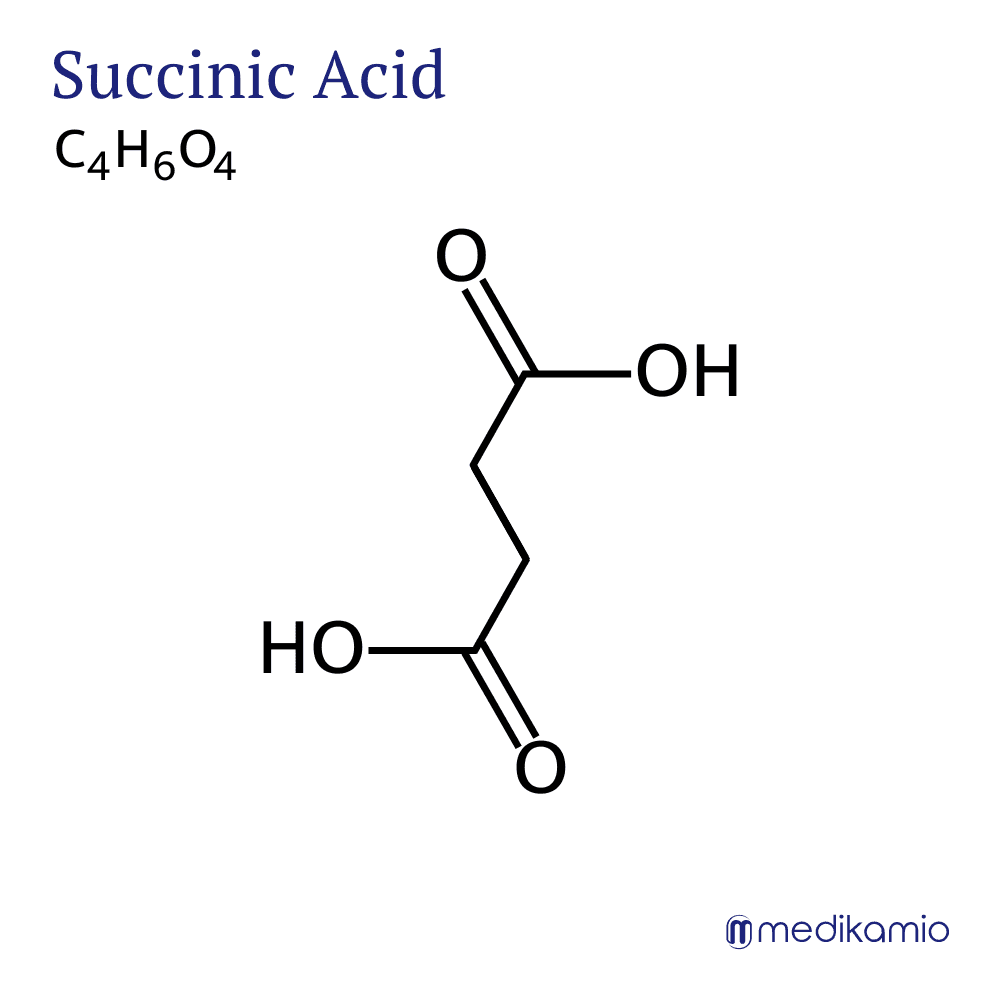Basics
Succinic acid is not so much an active ingredient as an important building block in the body's metabolic processes. It can also be referred to as succinic acid or butanedioic acid. It is colorless, odorless and a crystalline solid. Succinic acid is a component of the citrate cycle and is used to break down glucose. Succinic acid is produced here as an intermediate product. It also occurs in the urea cycle. As E363, it is also often used as a flavor enhancer in food. It is also used in the production of dyes, in plasticizers and solvents.

